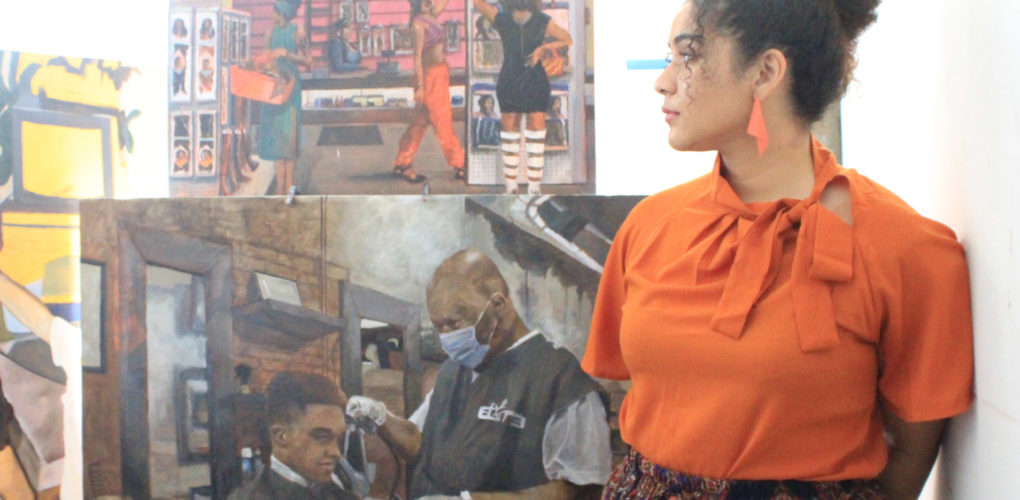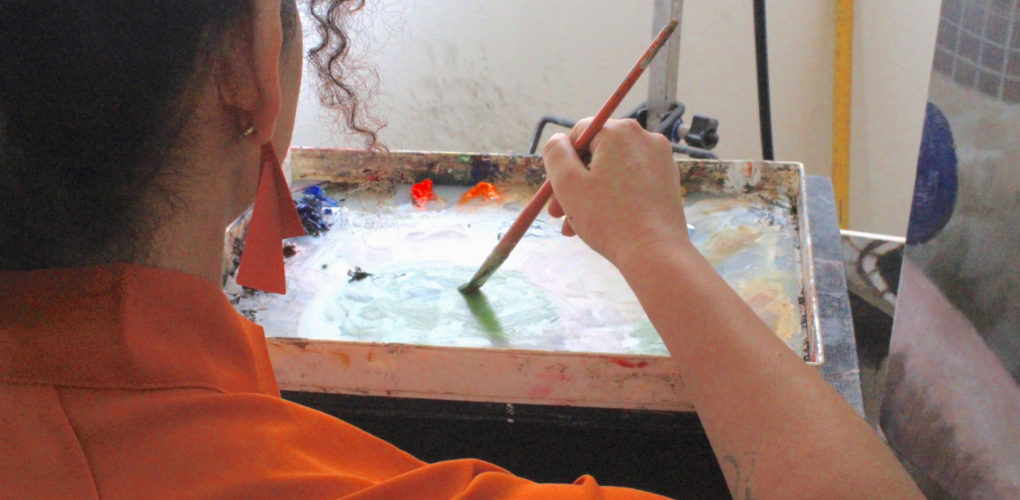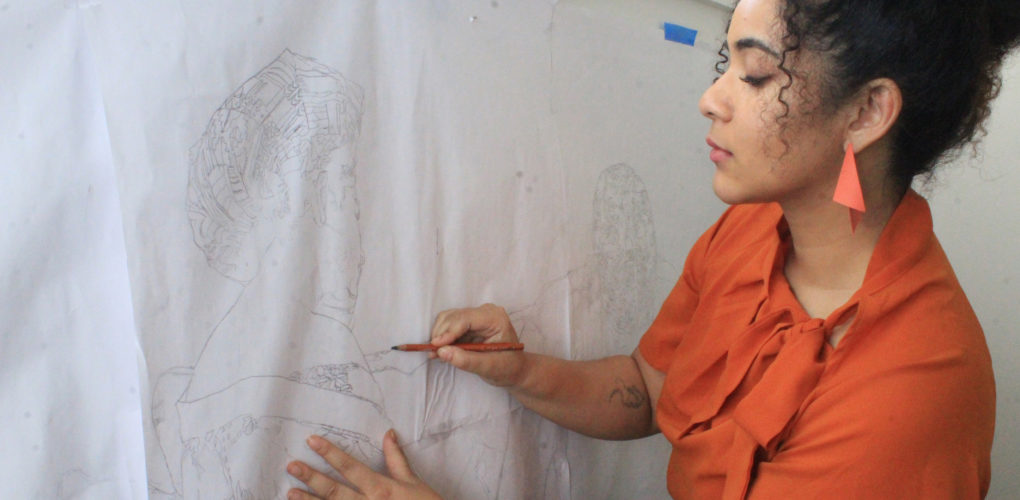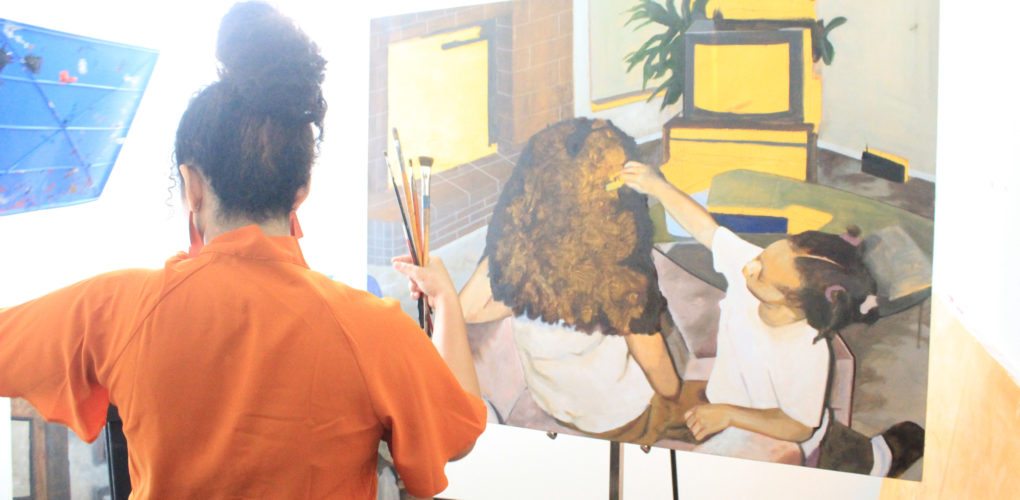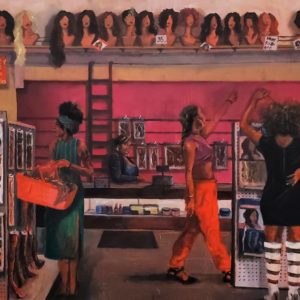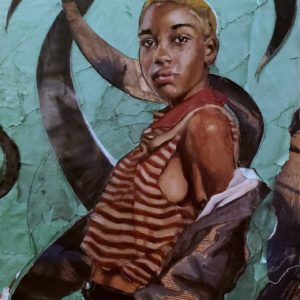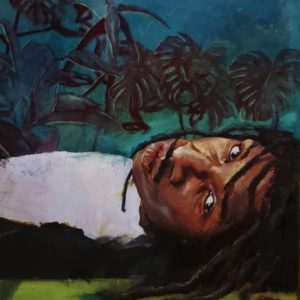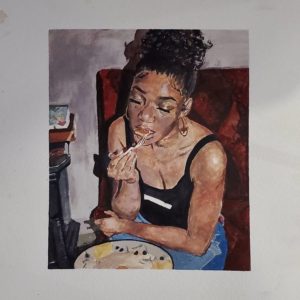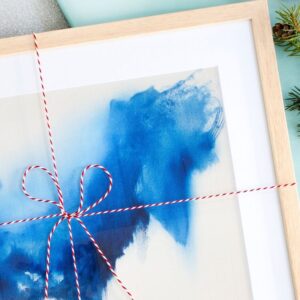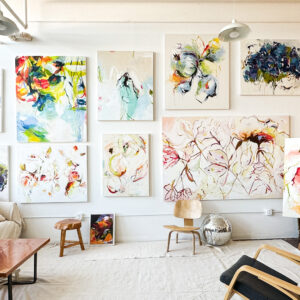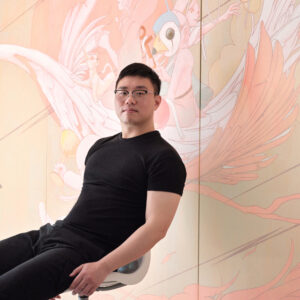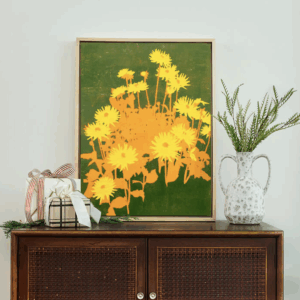One to Watch
 Abigail Albano-Payton and the Complexities of Community
Abigail Albano-Payton and the Complexities of Community
A young Afro-Filipina artist working in Laguna Beach, California, Abigail Albano-Payton pays homage to her community and heritage through richly textured figurative paintings. With a focus on exploring BIPOC experiences, Abigail aims to repurpose the traditionally Eurocentric tools of representation and portraiture to highlight underrepresented subjects. Her most recent series delves into the natural hair community, and all of the emotions and expectations that come with navigating the social pressures surrounding appearance.
Abigail approaches her paintings and collages with both formal and conceptual sensitivity, resulting in emotive reflections on the social norms and practices that underlie the everyday. Abigail holds a BFA in Drawing and Painting with a minor in Graphic Design from Laguna Beach College of Art and Design. Her work has been featured in the Los Angeles Times and exhibited at Salt Fine Art Gallery in Laguna Beach.
Tell us about who you are and what you do. What’s your background?
My name is Abigail Albano-Payton. I am a 22-year-old artist living and working in Laguna Beach, California. I come from many different places, but I had lived in Dallas for nine years before moving by myself to California shortly after graduating high school. I am Afro-Filipina, and am currently exploring the complexities of my heritage and background through my work. I [recently earned] my bachelor’s degree in drawing and painting from Laguna College of Art and Design.
What does your work aim to say? What are the major themes you pursue in your work?
I intend for my work to depict BIPOC experiences, whether it be somewhat exaggerated or simply a candid shot of everyday life for individuals like myself—individuals who are disenfranchised or struggle with self-identity. Overall, through my work I hope to reappropriate traditional European techniques to give representation to those who are dismissed and to create new narratives. My piece The Big Chop is a mixed media portrait of Jada, a friend of mine who is in the natural hair community. I wanted to not only paint her, but to also incorporate unique aspects of her that I see with my own eyes through strange combinations of different media.
Can you walk us through your process for creating a work from beginning to end?
Before beginning a new piece, I take my own reference photos in a variety of environments and lighting. After narrowing them down, I will use Photoshop in order to manipulate the composition and environment until it suits my specific idea for that piece. After drawing the composition out, I will use the traditional technique of oil transferring onto either wood or a canvas, and start with an underpainting.
However, my process for each piece is different. Sometimes I’ll paint flatly in large sections and render on top; other times I’ll bring in a variety of random materials to emphasize certain vibrancies or figurative elements. I am learning to be okay with feelings of uncertainty throughout the process, and accepting the journey towards the end product. There’s something super fresh and exciting about unexpectedly discovering new methods instead of planning out every single detail or move. It’s a goal to force myself out of my comfort zone.
What are you working on next?
I just finished a series about the natural hair community. My goal was to raise discussions on society’s perception of natural hair, as well as give homage and visibility to how natural hair alone brings intimacy and art due to its versatility. My next series will be large-scale, multimedia representations of old family photos from my Filipino mother’s side.
How does your work comment on current social and political issues?
To me, representation is a tool that creates social and political discussions that have been neglected. I’ve been called a segregationist with my decision to only depict BIPOC individuals in my personal work. It’s not to be exclusive, but rather inclusive to those who have always been worthy of representation in an honorable light despite the classism within the art world.
Love reading about all things art? You can have articles from Canvas, curated collections, and stories about emerging artists delivered straight to your inbox. Sign up for the Saatchi Art Newsletter.
